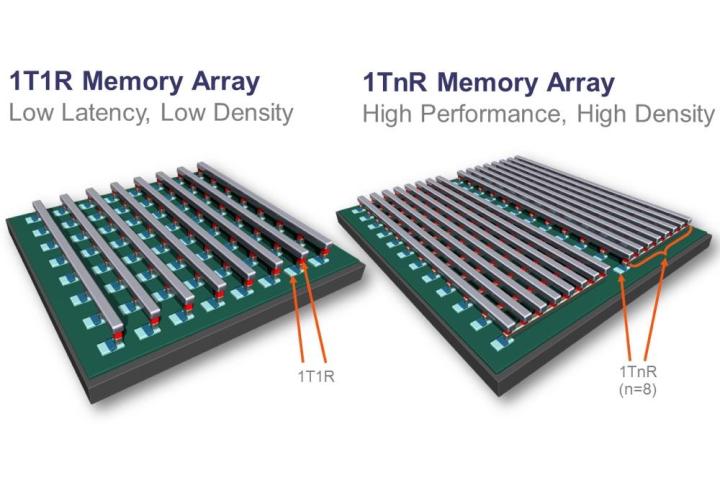
But it’s not the only game in town. Crossbar, a hardware startup founded in 2010, has been pouring time and money into an alternative called resistive random access memory, or RRAM. This is a “non-volatile” form of random access memory, which means it retains information without an electrical current applied (the DDR-RAM in your PC forgets all its data when your computer is powered off).
Crossbar’s approach involves RRAM stacked into a cube-like structure that expands in three dimensions, making capacities of up to one terabyte theoretically possible on a single chip. Sounds great, right? Just one problem; placing so much memory so close normally results in current leakage, which can increase power consumption at best and make a drive useless at worse. Or, to use Crossbar’s own words, “multiple parallel conduction paths introduce leakage currents that limit the maximum array size and increase power consumption.”

This debilitating limitation could put Crossbar out to pasture, but its engineers say they have found a solution called “1 Transistor Driving n Resistive memory cell,” or 1TnR, which ties up to 2,000 memory cells to a single transistor. With this design in place the company has been able to avoid current leakage, which means high-capacity drives are a more practical possibility. The design can also endure up to 100 million usage cycles and switch between on and off states within 50 nanoseconds, traits that make the technology more than durable enough for consumers.
In practical terms, Crossbar’s RRAM breakthrough means it’ll be able to cram extremely large amounts of solid state storage into a space the size of a postage stamp. That’s even smaller than Samsung’s V-NAND and Intel’s upcoming 3D NAND can manage. Imagine, for example, an 11-inch Chromebook with a terabyte of storage.
You’ll have to imagine for awhile longer, though, because the technology won’t hit retail products until late 2015 at the earliest. A 2016 arrival is more likely, and the manufacturers that are interested in Crossbar remain unknown. The company isn’t saying who its early “alpha customers” are. There are still several hurdles in the path of this new storage technology but, if successful, it could generate a rapid and much-needed advance in storage capacity.


